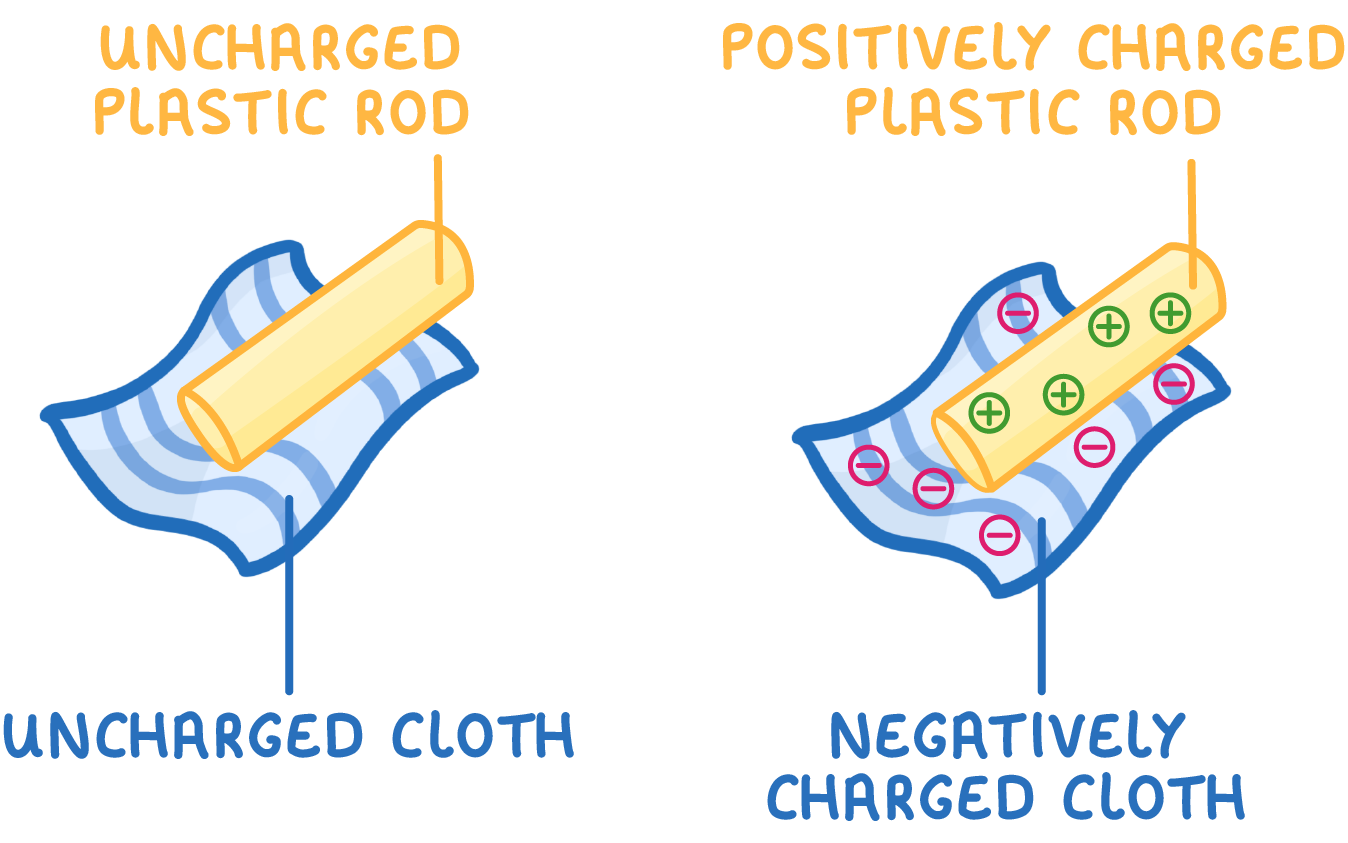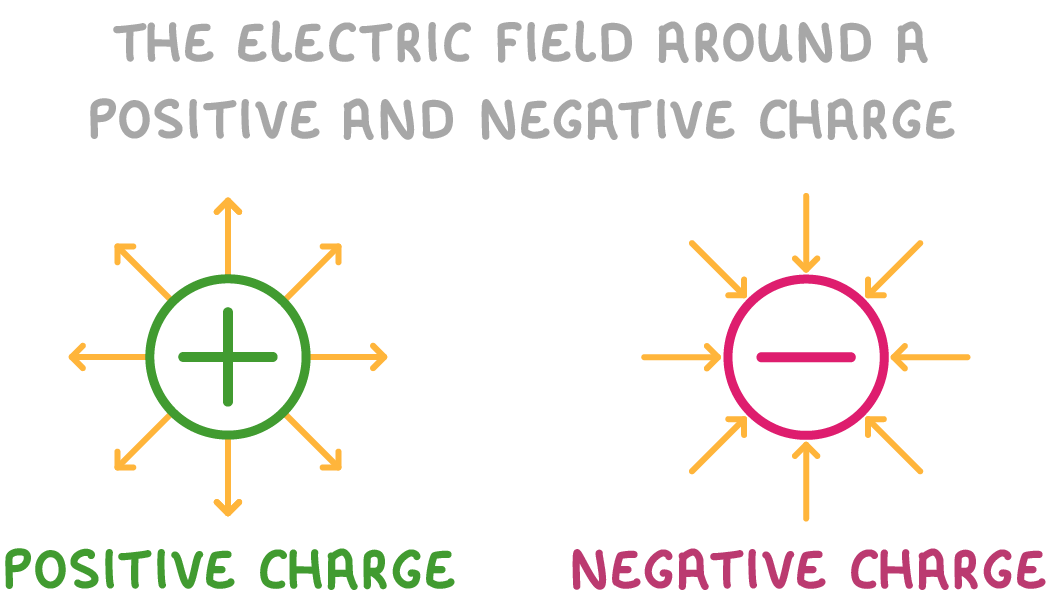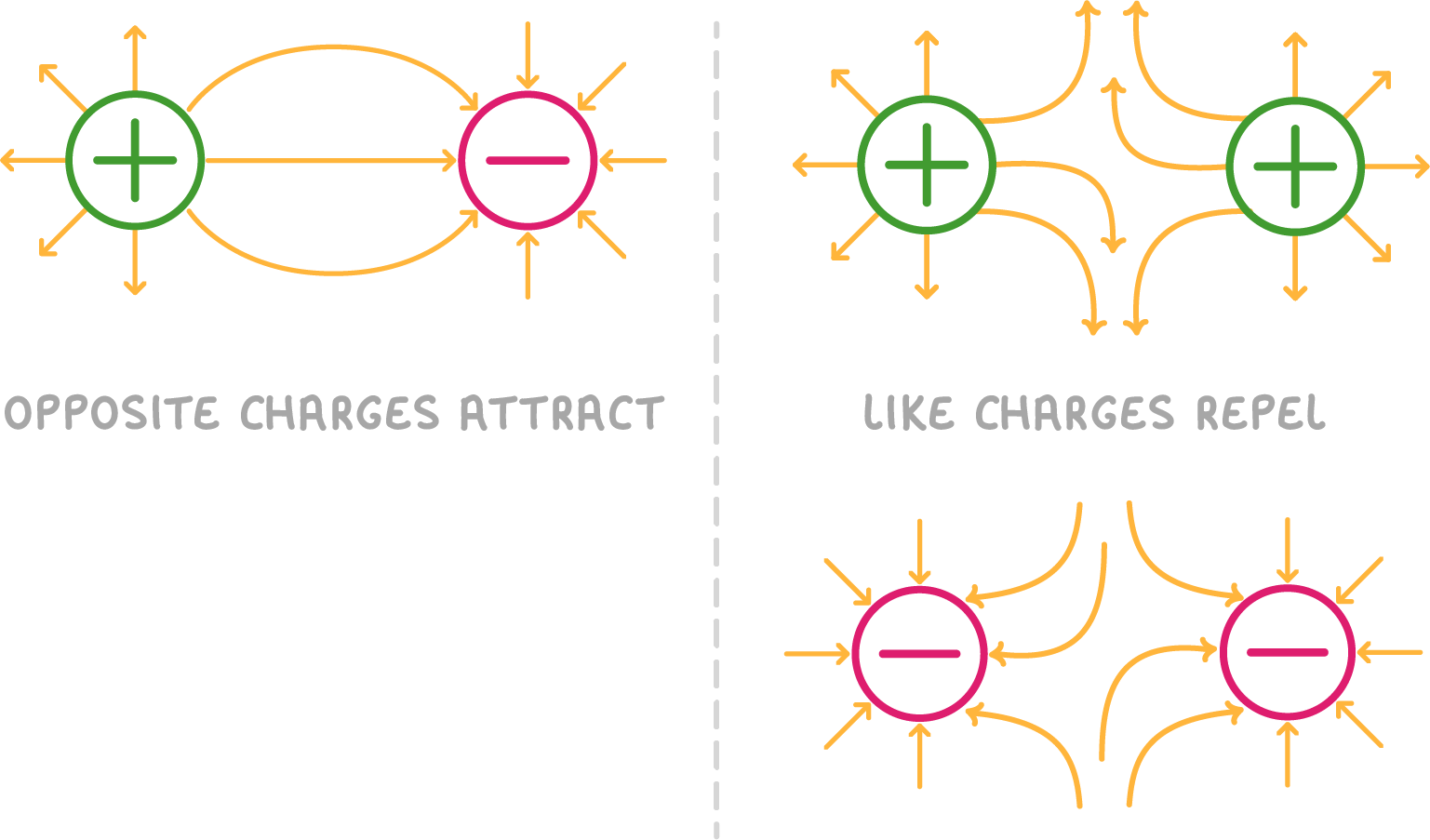Static electricity
This lesson covers:
- How charges can build up when objects are rubbed together
- The concept of electric fields around charged objects
- How charged objects interact with each other
Charges can build up through friction

When two insulating objects are rubbed against each other, electrons can be transferred from one material to the other.
This leaves the objects with equal but opposite electric charges.
- One object gains extra electrons, becoming negatively charged
- The other object loses electrons, becoming positively charged
This build up of charges is known as static electricity. The charges remain in place on the object's surface rather than flowing to another location.
Charged objects have electric fields

Even though the charges do not move in static electricity, they still exert forces over a distance.
This is because charged objects have an electric field surrounding them.
- An electric field is the region around a charged object where other charges will feel a force.
- The electric field allows charged objects to interact without direct contact.
Interactions between charges
The way charged objects interact depends on the size and types of charges involved.

- Opposite charges attract as the negative charges move toward positive areas.
- Like charges repel as they push away from similar charge.
- The strength of attraction or repulsion depends on the amount of charge.